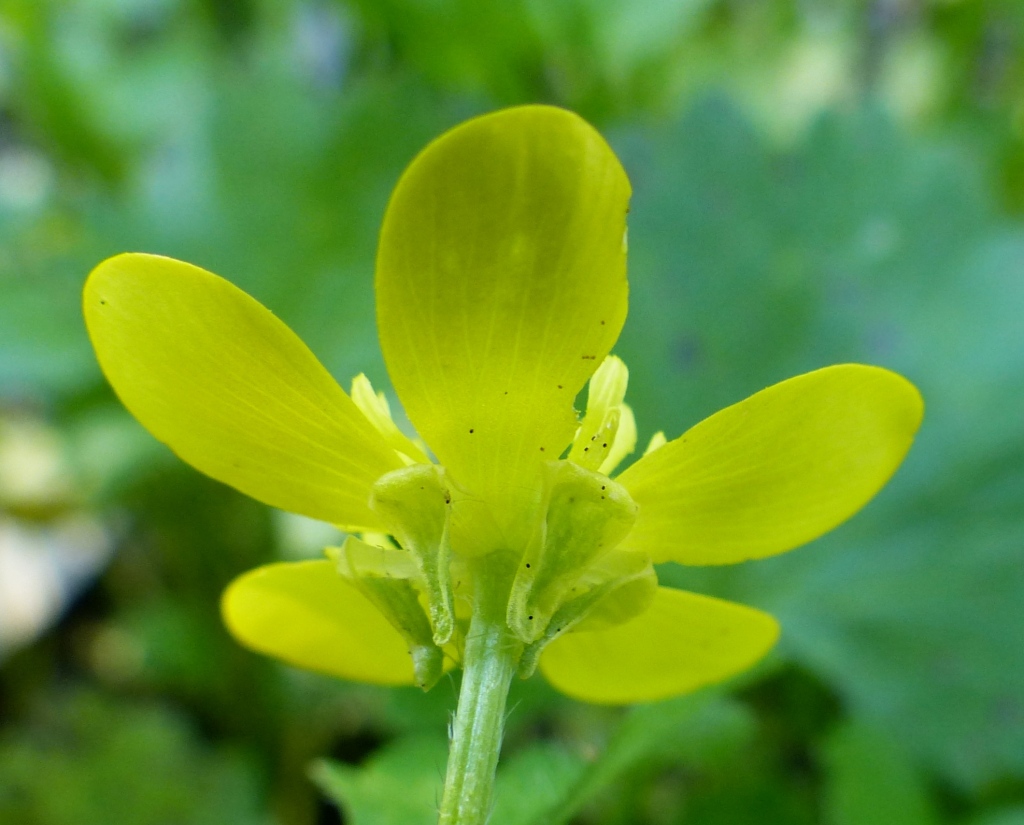Ranunculus muricatus
L. Sharp ButtercupTufted, glabrous to pilose annual to c. 20(–50) cm high. Leaves basal and cauline; petioles 2–12 cm long; lamina broadly ovate to subreniform, cordate at base, 1–5 cm long and wide, entire or shallowly (or the uppermost deeply) 3–5-lobed, margins coarsely crenate or dentate. Flowers solitary in upper axils or in loose terminal cymes, pedicels elongating to c. 6 cm in fruit; sepals 5, ovate, c. 5 mm long, glabrous to sparsely pilose, strongly reflexed; petals usually 5, obovate, 6–10 mm long, yellow, glossy; nectary lobe oblong, 1–2 mm long, cuneate to obovate, sometimes emarginate, free in the upper 20–50% of their length; stamens c. 15–30. Achenes 8–25, ovate to obovate, 5–7(–8) mm long, flattened, the faces evenly covered with spine-tipped tubercles or the central area lacking tubercles, margin slightly thickened; beak stout, almost straight, 1.5–3 mm long; receptacle with a few fine hairs. Flowers Aug.–Nov.
MuM, Wim, GleP, VVP, VRiv, MSB, MuF, GipP, OtP, WaP, Gold, CVU, GGr, DunT, NIS, EGL, EGU, HSF, HNF, OtR, Strz, VAlp. Naturalized all States except NT. Widely naturalised in other countries, native to southern Europe. Widespread in all but the far north-west, favouring heavy waterlogged soils of the lowlands, but recorded in subalpine bogs near Mt Baw Baw.
Walsh, N.G. (1996). Ranunculaceae. In: Walsh, N.G.; Entwisle, T.J., Flora of Victoria Vol. 3, Dicotyledons Winteraceae to Myrtaceae, pp. 35–63. Inkata Press, Melbourne.
 Spinning
Spinning




